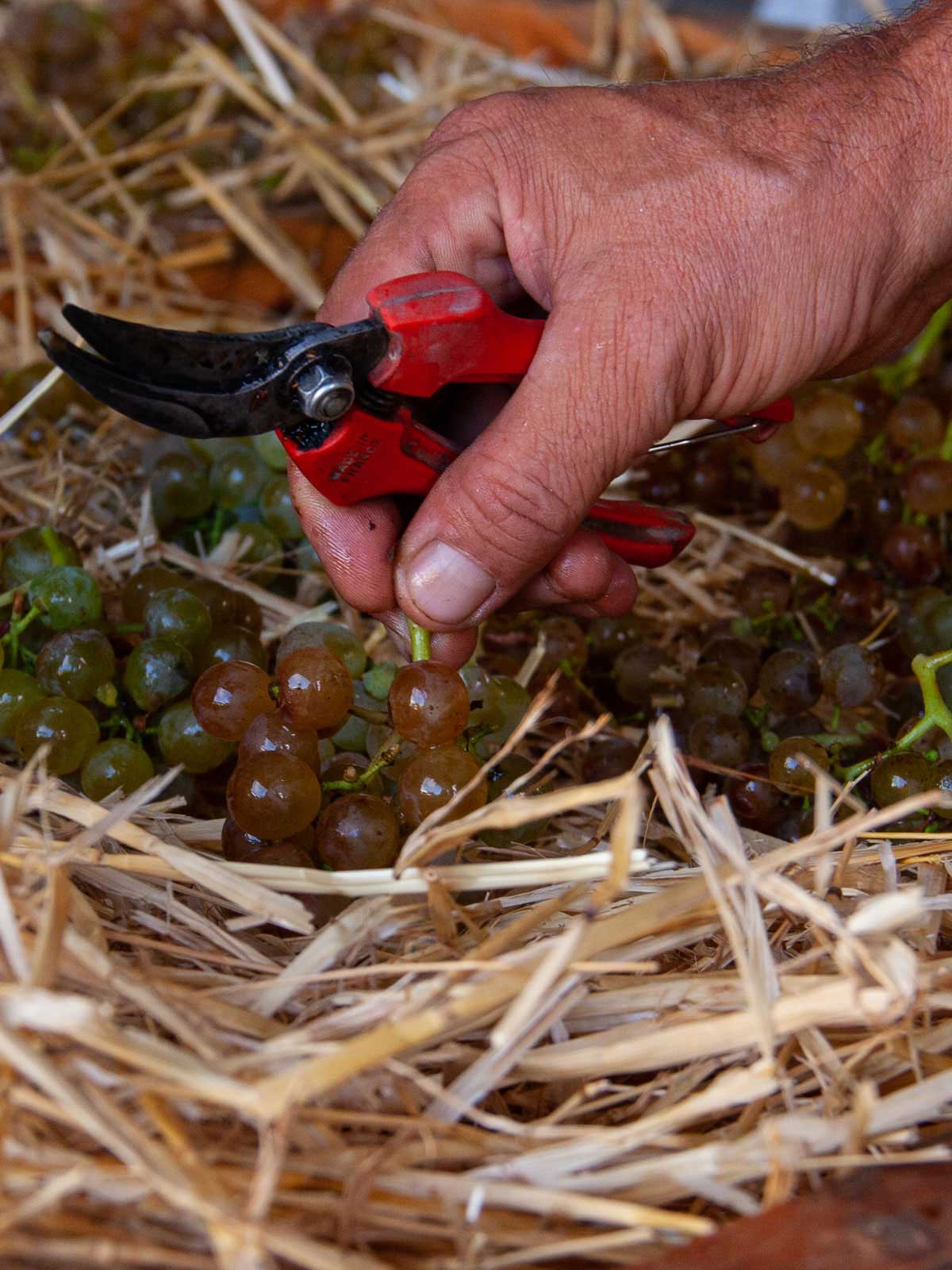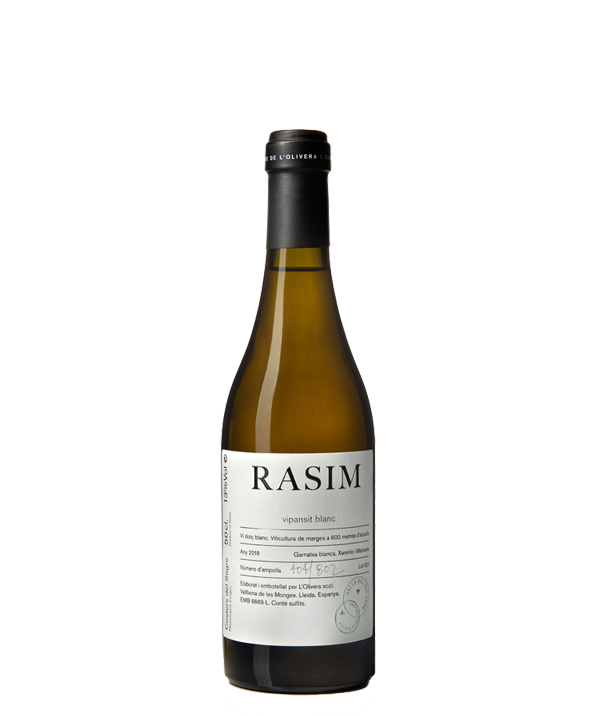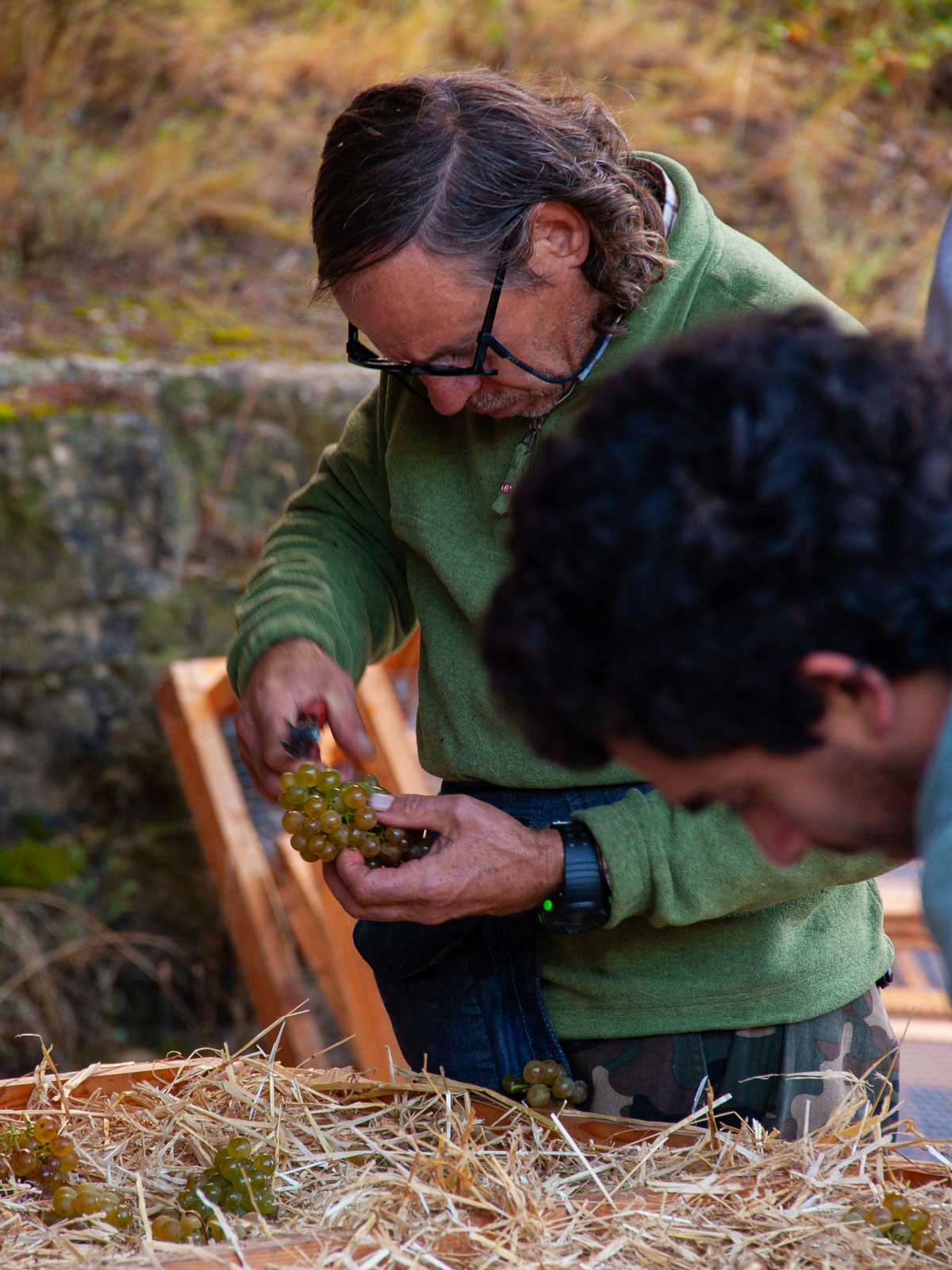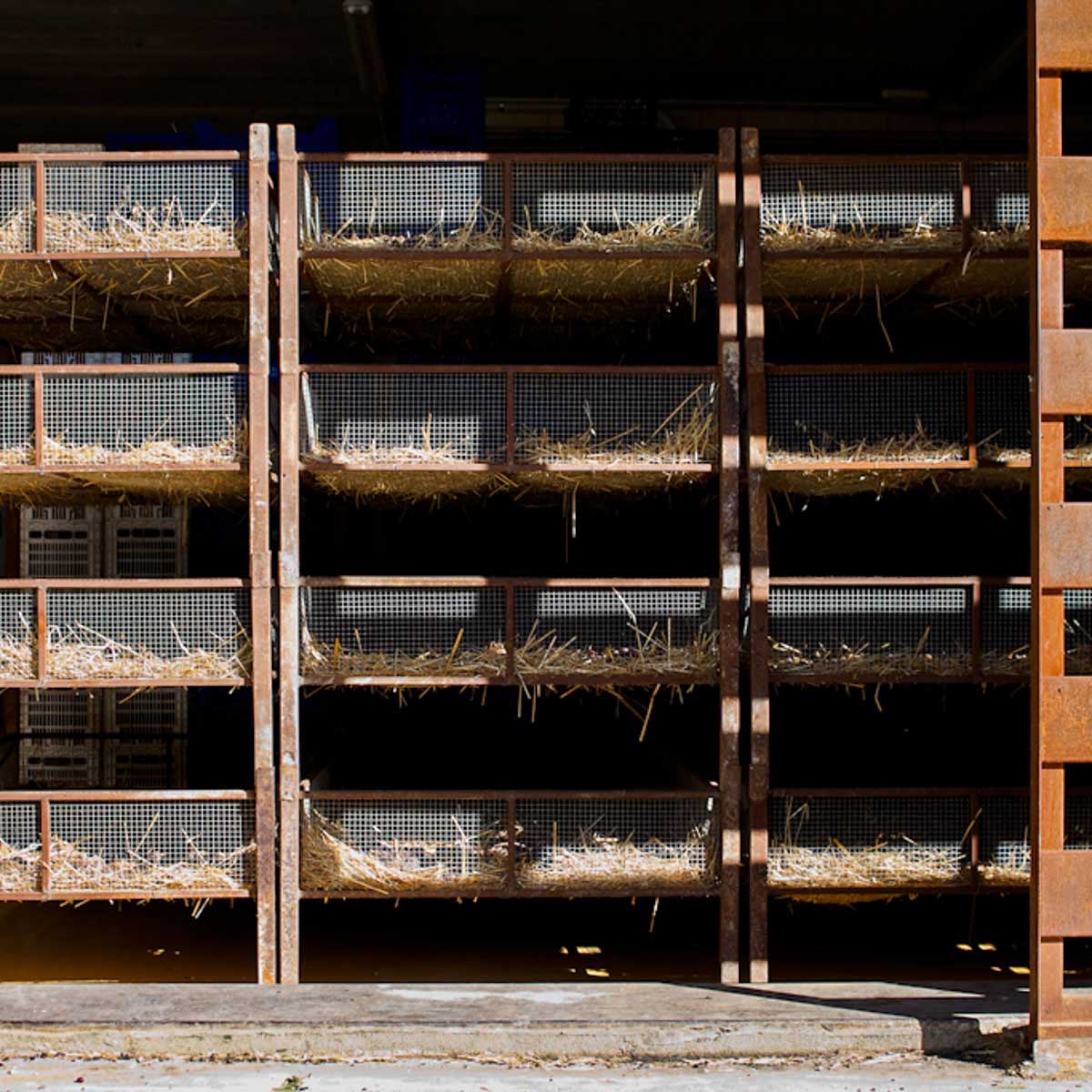Rasim Vipansit
Rasim is the name this grape was given in fourteenth-century Perpignan and is the origin of the words raïm, in Catalan, and raisin, in French. Rasim is also the name of the project that emerged from the partnership with Catalan designer Claret Serrahima to make two dessert wines at Vallbona.

Rasim is a wine that requires time: on the vine, letting the grapes ripen perfectly, and before entering the winery, while they rest in the shade on beds of straw where they dry, respecting their natural rhythm until reaching optimal sugar concentration levels. Rasim is more than a wine. It is a shared project, bolstered by a constant process of research and learning. With it we travelled and discovered different zones and experiences that guided us on this path towards the production of naturally dessert wine.
Terroir
ORIGIN: Vineyards from the Nalec Woods in the Corb River Valley subzone of the Costers del Segre DO. Plots characterised by the drystone walls that surround the vineyards, preserving the fertility of the soil and the efficiency of the water.
SOIL: Chalky clay soil with variable levels of stoniness and depth.
CLIMATE: The climate is continental Mediterranean, with cold dry winters and hot summers tempered by the soft evening breeze blowing in from the sea that cools the night, particularly during the ripening season. The scarce rainfall is concentrated in autumn and spring (350-450 mm yearly).
Varieties
White grenache (55%), Malvasia (27%) and Xarel·lo (18%)
Vine growing
Organic farming. Harvested by hand into 10-12 kg crates and dried in the shade on a bed of straw.
Wine processing
Dried in the shade on beds of straw for 1-3 months to encourage the natural concentration of the sugars. Subsequent manual selection and fermentation in a vat.
Production
2019 vintage: 880 bottles


